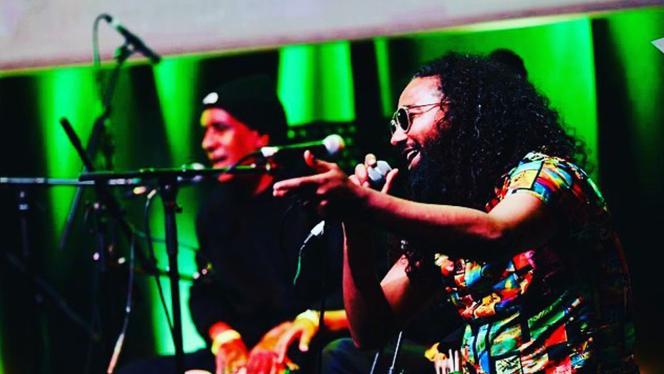Thursday 21 November 2024
Na koro: reviving dance and experimentation in Somali music

Somali music needs to find a balance between those aspects that nourish our minds and those that are intended for our bodies.
A long standing tension between mind and body has permeated modern Somali music since its early days. Rooted in the meaning-oriented disposition of the Somali psyche, xikmad (wisdom)—in this context referring to the depth and sobriety of a song’s content—has traditionally been the most valued aspect of music by the majority of Somalis. However, over the last four decades, periodic rebellions against this emphasis on meaning have reshaped the Somali musical landscape, even if only temporarily.
During the era of Somali band music—the pinnacle of modern Somali music history—musical diversity and genre experimentation were at their peak, spanning from the 1960s to the late 1980s. During this period, the widespread emphasis on meaning in music began to wane, and elements of movement and dance started to dominate the scene. Bands like shareero and dur-dur fused funk, reggae, and rock and roll with Somali melodies, while figures like Cabdo Hamarqoodh introduced Somali influences into the rhythms of the Twista dance. It was a time when xikmad was no longer the sole focus of music.
However, from the late 1980s onward, as bodily entertainment—luxurious and dependent on stability—became a rarity due to the country descending into chaos, meaning once again took centre stage. It held Somali music in a tight grip, narrowing the scope for sonic experimentation. The dire circumstances of the people required words of solace and reflection more than any other element in a song.
Despite this, there were occasional efforts to break free, with figures like Ina Dalmar and Abdulqadir Juba creating music suitable for house parties at home and clubs abroad. The advent of hip-hop in the late 1990s and early 2000s made a modest impact, slightly chipping away at the firmly shut iron gates. However, given that rap music, despite being a product of modern experimentation, is itself wordier and mind-oriented, meaning remained the dominant taste in Somali music.
Yet, no iron gate can withstand the blows of time forever. In the later years of the last decade and the beginning of this one, sounds unfamiliar to the current generation but not foreign to previous ones began to resurface. Artists like Doni B, Isma IP, and DIDI Naji—son of the legendary Ahmed Naji—started to infuse the musical landscape with rhythms that stirred our stiffened limbs, making them involuntarily give in to motion, as if they had been waiting for this moment.
Afrobeats intertwined with Somali lyrics can now be heard in songs like Juuro by Isma IP and Kale Tum by Hanad Bandz, causing a cultural clash for those of us uncertain of our African identity and accustomed to Middle Eastern melodies. Even dancehall has been Somalised in tracks like Saameyn.
Additionally, techno sounds with heavy bass and drums carry Somali words through their intervals, with artists like Hibotep resurrecting ancient African ritualistic sounds reminiscent of the drums of the Saar and other traditional rhythms. Somali electronic dance music (EDM) by artists like Banana Overdose also features layers of synthesised sounds that achieve their purpose: making the body move. The latest African genres have not been left out either, with the log drums of Amapiano backing the rap of artists like Big Moha.
Notably, these works are not only imbued with dance and movement but also with sensuality in their lyrics. These artists are not merely reviving the physical aspects of music but are also boldly focusing on parts of the body that have been most stigmatised and censored by post-civil war culture and imported extremist interpretations of religion.
“Uunsi ma ii shidido?” (won’t you burn some incense for me?) is sung playfully by Didi Naji following the sound of the Zimbabwean mbira before diving into heavy drum rhythms that shift thrice throughout the song. He moves smoothly with a girl who dances in a style mimicking a once-celebrated but now-stigmatised cultural dance called the niiko.
Repeating one of the most ancient and delicate elements of Somali history and culture—the incense—the song gradually transitions into the rhythms of Salsa, featuring the sounds of the guitar and conga drums. They then suddenly shout shareero in unison, paying homage to the legacy of a band composed of his father and uncles in the 1960s and 1970s, which he and his group, including his brother, perfectly mirror today.
Though the song, like others of its kind, contains Somali lyrics, it does not offer the xikmad—the profound reflections on life, time, and love—that the average Somali listener might expect. In fact, this characterises these works, as they aim to engage the body rather than the rational faculties.
Didi Naji’s other works follow a similar theme, incorporating various sounds, most notably African, Caribbean, and Latin influences. It is evident in tracks like Na Koro that the significance of whether the lyrics are understood is minimal, as the focus is primarily on the musicality of the words and their alignment with the lively beat.
Furthermore, the artist’s exploration of genres in the Somali language spans a wide array of global sounds, but his "Salsa Somalia" particularly stands out. In songs like Ma Seexdo, he intricately weaves Somali with the rhythms of Cuban Salsa, offering an exhilarating musical experience that demands physical movement.
This brings us to another significant aspect of these body-oriented works: their revival of experimentation with sounds and genres from around the world. This experimentation, which was a key factor in the vibrancy of Somali band music in the 1960s and 1970s, allows these works to transcend language barriers. As a result, they are accessible to everyone, regardless of their culture or language, due to the universality of the human body. This is evident in the comments sections of most of their videos, where people from near and far, Somali and non-Somali alike, express their admiration.
Music has, since time immemorial, served to alleviate human distress. It achieves this not only through the profundity and wisdom contained in its lyrics—though this has its own distinct domain—but also through the drums and chanting that directly connect with the individual, igniting a spark of motion and helping to release the negative burdens from both the mind and body. This catharsis through movement is what we refer to as dance; something we have unfortunately neglected in our lives, dismissing it as meaningless and childish, despite the immeasurable benefits it offers to our well-being.
Ultimately, these works, which aim to restore a different approach to music, may help us reconnect with our bodies—an essential connection lost in our pseudo-urbanised lives, especially after the civil war, but still maintained by rural communities through traditional dances and games. As the chorus of a traditional song, remade by many, repeatedly reminds us: kaalay ila cayaar (come dance with me), without shame.









